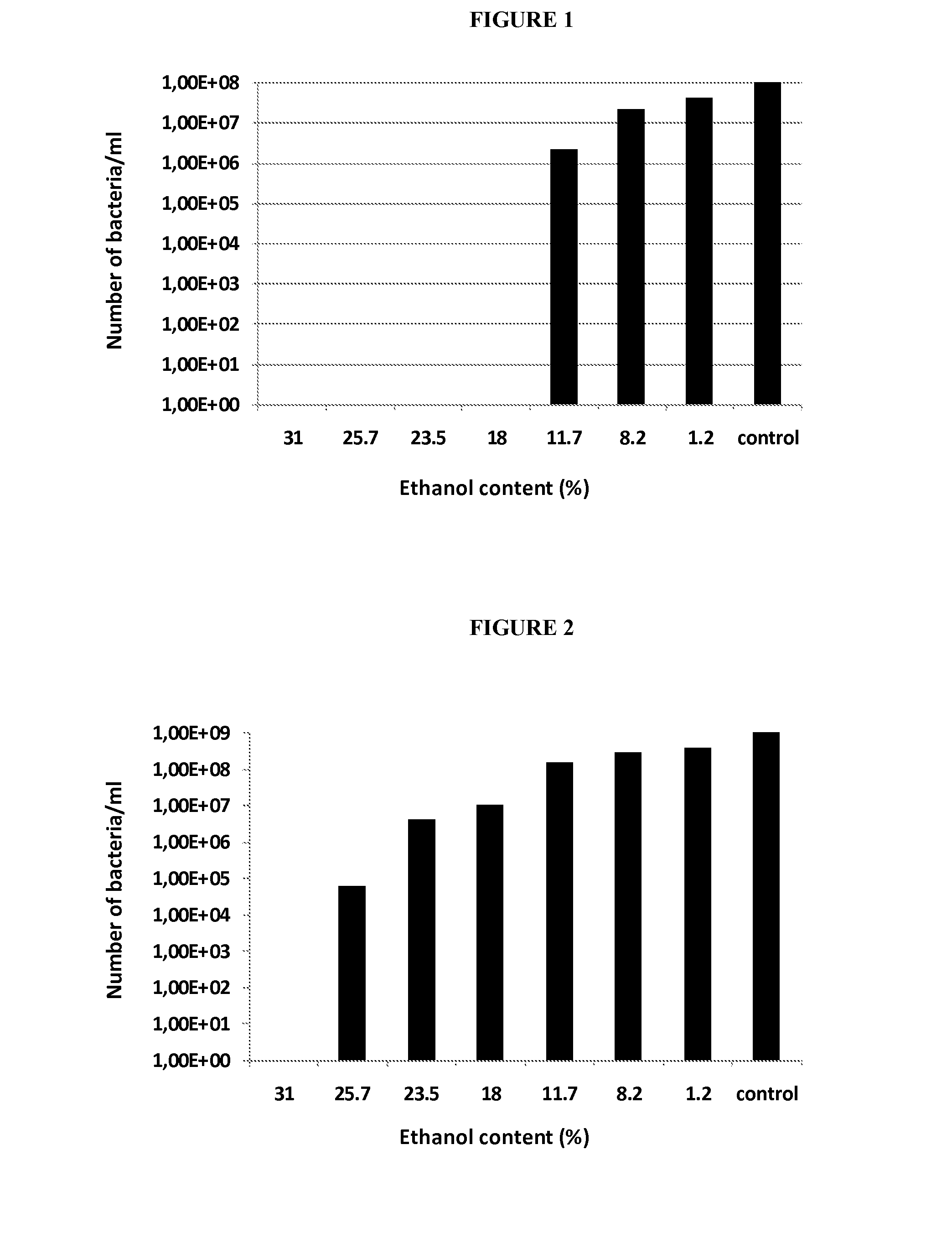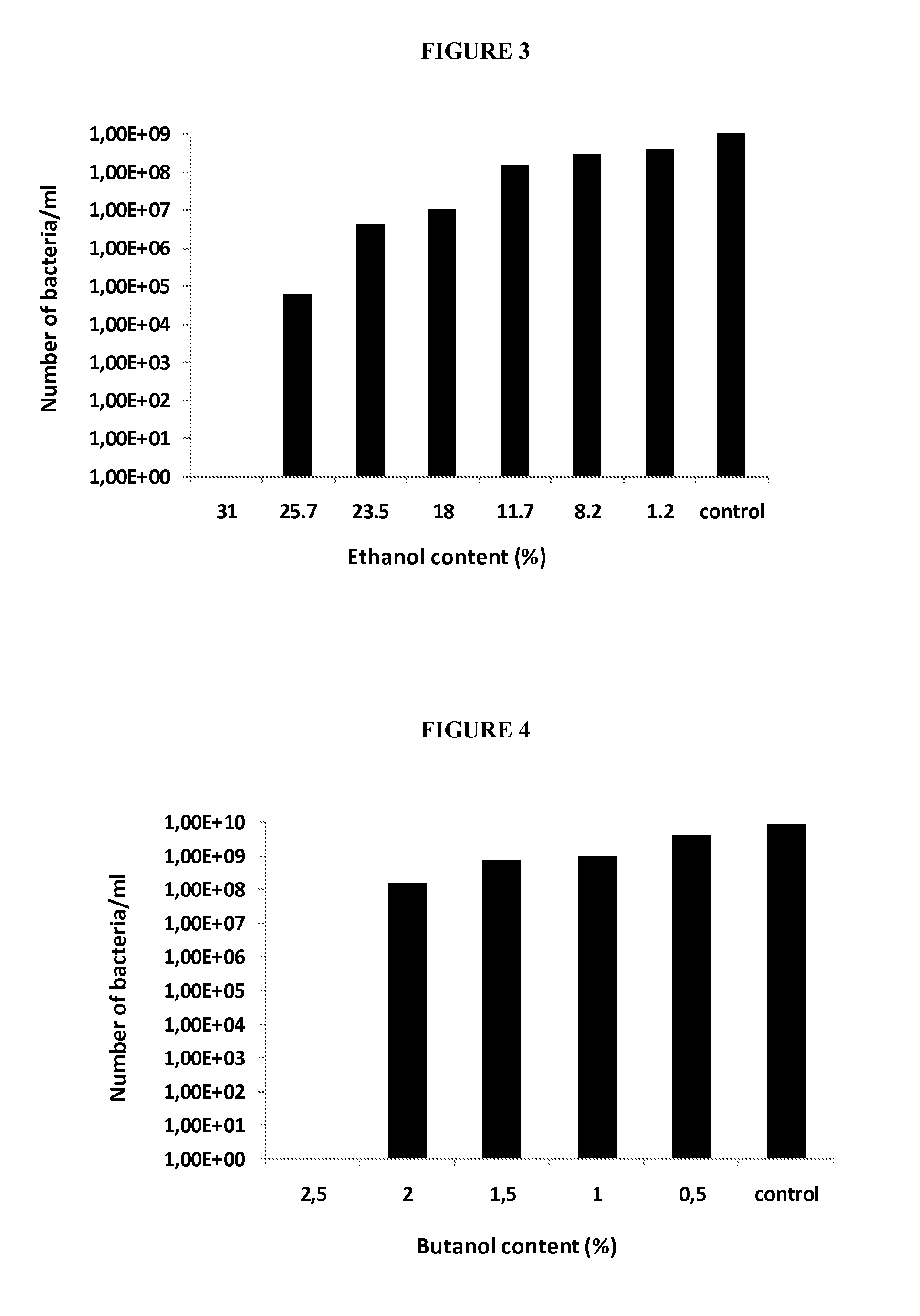Use of Bacteria for the Production of Bioenergy
- Summary
- Abstract
- Description
- Claims
- Application Information
AI Technical Summary
Benefits of technology
Problems solved by technology
Method used
Image
Examples
example 1
Selection Tests
[0103]To determine whether a microorganism is equipped with the properties required by the invention, specific tests must be conducted in order to determine whether a genus, a species and / or a bacterial strain is able to have the required properties and to function in a method for the conversion of biomass or biomass derivatives, and to determine which significant improvements can thereby be obtained.
[0104]These specific tests according to the invention are conducted in the following conditions:
Culture Medium:
[0105]D. geothermalis (D.G.) is cultured at 50° C. under agitation, in an aerobic medium. The 167 culture medium is used to maintain the strains. The minimum medium is used in fermentation experiments, in particular to characterize the metabolites. In this case, 500 ml of culture medium are incubated 1 to 7 days under agitation in a 1 L Erlenmeyer, after being seeded with 5 ml of D. G. confluent culture.
167 Thermus Medium
[0106]
Tryptone1gYeast extract1gAgar28gNitr...
example 2
Production of Ethanol in the Presence of Deinococcus geothermalis
[0133]In a 500 ml Erlenmeyer, containing 100 ml minimum medium at 50° C., an inoculum of 1010 D. geothermalis (DG) is added at 50° C. The culture is placed under agitation to promote aeration.
[0134]This culture is then ready to be used in a conventional biomass fermentation tank in which, under the best conditions, ethanol and other metabolites can be obtained with an excellent yield at 55° C.
[0135]After 1 to 7 days in the reactor with the biomass to be treated, the presence of the above-mentioned ethanol and metabolites was quantified by HPLC (following the protocol described above). Disappearance of glucose was observed and concomitant production of ethanol, whose concentration was estimated analytically. Other metabolites of interest were detected. The replacement of glucose by xylose in the culture medium also allows bacterial growth and the production of ethanol.
[0136]In one variant of embodiment of this example,...
example 3
Bactericide Effects of Ethanol and Butanol on Deinococcus geothermalis
Material and Methods
[0137]This method enables evaluation of the bactericide effects of organic solvents on bacteria in growth or in stationary phase. The solvents tested are ethanol and butanol. The bacteria tested belonging to the genus Deinococcus:
[0138]develop between 40 and 70° C.
[0139]are operational between pH3 and pH9.5
[0140]are able to reassemble, in full or in part, their genome split by a stress, notably by irradiation, in particular by UV or gamma rays, by dessiccation, by enzyme action, by ultrasound or by chemical stress.
[0141]The test is to be carried out at the optimal growth temperature for the strain tested. From a pre-culture in stationary phase in an enriched medium, 10 ml of enriched medium is seeded at 1% v / v. The enriched medium contains: peptone 2 g / l, yeast extract 5 g / l and glucose 10 g / l: solution sterilized by autoclaving (20 minutes at 120° C.). To this solution are added the followin...
PUM
 Login to View More
Login to View More Abstract
Description
Claims
Application Information
 Login to View More
Login to View More - R&D
- Intellectual Property
- Life Sciences
- Materials
- Tech Scout
- Unparalleled Data Quality
- Higher Quality Content
- 60% Fewer Hallucinations
Browse by: Latest US Patents, China's latest patents, Technical Efficacy Thesaurus, Application Domain, Technology Topic, Popular Technical Reports.
© 2025 PatSnap. All rights reserved.Legal|Privacy policy|Modern Slavery Act Transparency Statement|Sitemap|About US| Contact US: help@patsnap.com



